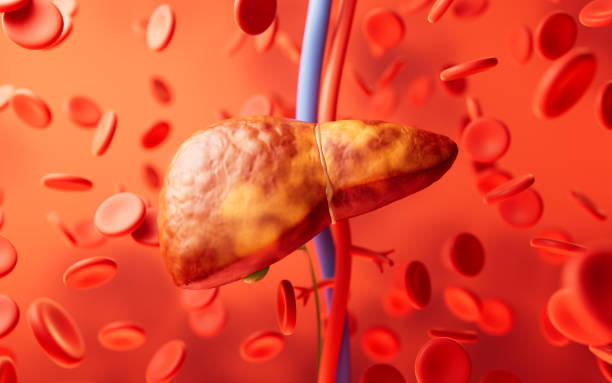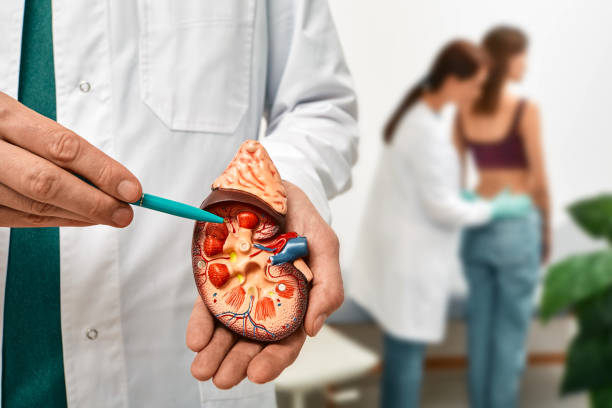By Deborah Bamisaye
“…You mean Tunde?”
‘Yes, but not the Tunde you know o.”
“Oh ok!”
“As I was saying: Tunde never touched alcohol, he never took a sip, yet his liver threw a wild party – totally unexpected and uninvited, it became silently fatty. This crept in unnoticed, threatening his health. Hmmm! So, he became fiercely curious and with a spark of defiance, Tunde cracked the code – with bold lifestyle changes, he fought back, turning his silent saboteur into a distant nightmare!”
“Meaning?”
“He won! Tunde won!”
Ever heard of NAFLD? It means Non-Alcoholic Fatty Liver Disease
Fatty liver in non-drinkers is a puzzle worth solving, as it is fast becoming prevalent. Let’s unravel some mysteries together, shall we?
NAFLD for non-drinkers; it is a condition where excess fat builds up in the liver of people who consume little or no alcohol. It is increasingly common worldwide.
What are the Causes?
– Type 2 diabetes, insulin resistance, and high cholesterol – all these increase the risk.
– Poor diet and physical inactivity contribute significantly.
– Other factors include high blood pressure, polycystic ovary syndrome (PCOS), is a factor too.
– Rare causes can include certain medications, an underactive thyroid, or pregnancy-related fatty liver (acute fatty liver of pregnancy).
– Obesity and excess abdominal fat are the leading causes. Obesity not only increases the risk of developing fatty liver but also accelerates its progression through multiple metabolic and inflammatory pathways. Weight reduction and managing metabolic health are critical to preventing and treating fatty liver disease in obese individuals.
Symptoms:
– NAFLD often shows no symptoms in its early stages, which is why it’s called a “silent” condition.
– Some may feel fatigued, generally unwell, or have mild discomfort or pain in the upper right abdomen.
– Advanced disease may lead to jaundice (yellowing of skin/eyes), bruising, or swelling of the abdomen due to liver damage.
Stages of Disease:
1. Simple fatty liver (steatosis): Fat buildup with no liver damage.
2. Non-alcoholic steatohepatitis (NASH): Inflammation and possible liver cell damage.
3. Fibrosis: Liver scarring begins, but liver still functions.
4. Cirrhosis: Severe liver damage, impaired function, risk of liver failure or cancer.
Diagnosis:
- NAFLD is often discovered incidentally through blood tests or imaging (ultrasound) done for other reasons. Diagnosis involves:
- Blood tests to assess liver function.
- Imaging scans to detect fat in the liver.
- Occasionally, a liver biopsy to assess inflammation and damage.
Management and Treatment
- Lifestyle changes are key: healthy diet, weight loss, and regular exercise.
- Managing diabetes, cholesterol, and blood pressure helps prevent progression.
- Avoiding excessive alcohol and quitting smoking are also important.
- There currently are no specific medications approved for NAFLD, but treatment targets associated conditions.
- Early intervention can reverse or stop progression; advanced disease requires specialized medical care.
Why It Matters:
NAFLD is now the most common liver disease worldwide and the leading cause of liver transplantation in some countries. Despite affecting non-drinkers, it can cause liver damage as severe as that caused by alcohol. Its “silent” nature means many are unaware until advanced stages, making awareness and early detection critical.
In other words, fatty liver in non-drinkers is a growing health challenge linked to lifestyle and metabolic health, demanding increased attention to prevention and early management.
Any Insight from Nigerian Doctors and Researchers? Absolutely!
Dr. Afolabi and colleagues (University College Hospital, Ibadan):
- Their study found a high prevalence (46%) of Non-Alcoholic Fatty Liver Disease (NAFLD) among Nigerian patients with type 2 diabetes.
- They emphasize that excess weight (overweight/obesity), hypertriglyceridemia, and elevated alkaline phosphatase are strongly associated with NAFLD.
- They advocate for lifestyle interventions such as dietary modification and exercise to reduce the burden of fatty liver disease and related complications.
- They also call for more large-scale, multi-site studies to better understand the true prevalence and impact of NAFLD in Nigeria.
Research from Jos, North Central Nigeria:
- A study showed fatty liver is common across all ages and sexes but especially common in middle-aged adults.
- There was a strong relationship between increasing body weight (BMI) and fatty liver detected via ultrasound.
- Most participants with fatty liver did not consume alcohol, highlighting the significance of NAFLD in the Nigerian population.
Will you love to Master the Secret that Prevents or Tackle the Challenge? Of course, you would! Here:
- Follow balanced, nutritious diet rich in fruits, vegetables, whole grains, and lean proteins like fish, tofu, and legumes.
- Incorporate healthy fats from sources such as olive oil, nuts, and fatty fish high in omega-3 fatty acids (e.g., salmon, sardines).
- Limit or avoid added sugars – drinks, candies, and processed foods.
- Avoid refined grains like white bread and white rice; instead, choose whole grains.
- Reduce intake of saturated fats found in red meat, full-fat dairy, and fried foods.
- Drink coffee in moderation (about 3 cups/day) as it may benefit liver health.
- Consider foods with antioxidants like green tea, walnuts, and turmeric which may help reduce liver inflammation.
- Regular Physical Activity- aim for at least 150 minutes of moderate aerobic exercise per week (e.g., brisk walking, cycling). 150 minutes per week? That’s what you can do – isn’t it?
- Exercise helps reduce liver fat, improves insulin sensitivity, and supports weight management.
- Weight Management – Losing 5%–10% of body weight significantly reduces liver fat.
- Avoid Alcohol and Smoking – Limit alcohol consumption or better said: ‘Avoid it altogether,’ especially if liver damage is a concern.
- Smoking cessation also benefits liver health.
- Manage Underlying Health Conditions – Keep blood sugar, cholesterol, and blood pressure under control through diet, exercise, and medications if necessary.
- Monitor and treat conditions such as type 2 diabetes and metabolic syndrome.
What’s more?
- Get adequate sleep and manage stress for overall wellbeing.
- Speak with a healthcare provider before using supplements; some like milk thistle or resveratrol are being studied but need more evidence.
- These lifestyle modifications can prevent fatty liver from developing or help reverse early disease stages, protecting liver health and reducing risks of complications.
Wait oh! I just thought of something: Whatttt? “If this sometimes happen to non-drinkers, what becomes of heavy drinkers?” There you go! You got what I’m thinking.
Asking me what the time is? (Checking) It’s 8…Oh! I’ll rather say: ‘It’s time to – crack the code!’





